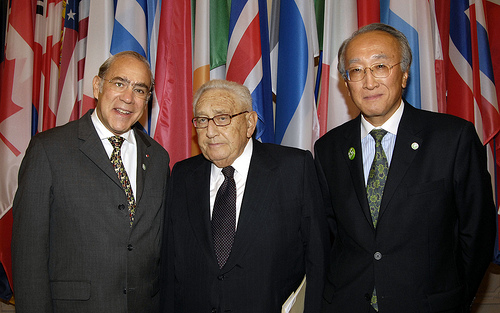To Read Now
Visit the European Commission's Market Observatory for Energy
- Download and read "More information on the Market Observatory for Energy"
- Download and view slideshow "Key Figures" It will help to know that an Mtoe is a megatonne of oil equivalent. It represents the amount of energy released from burning one million tonnes of crude oil. In OECD/IEA tabulations, 1 Mtoe is equal to 4.1868 x 1016 J and is used as the general unit to describe the energy content of all fuels. (APS Physics) I also recommend looking at the last slide first for important definitions.
The International Energy Agency (IEA) is an "autonomous organisation which works to ensure reliable, affordable and clean energy for its 28 member countries and beyond. Founded in response to the 1973/4 oil crisis, the IEA’s initial role was to help countries co-ordinate a collective response to major disruptions in oil supply through the release of emergency oil stocks to the markets. While this continues to be a key aspect of its work, the IEA has evolved and expanded. It is at the heart of global dialogue on energy, providing authoritative and unbiased research, statistics, analysis and recommendations."

Launched in June 2006, Energy Technology Perspectives is the IEA's leading biennial publication. The series is a response to a request from the G8 in 2005 for guidance on how to achieve a clean, clever and competitive energy future and how to achieve a 50% reduction in global CO2 emissions by 2050.
Energy Technology Perspectives uses scenarios to evaluate technology and emissions outcomes. The Baseline scenario illustrates what is likely to happen if no new action is taken through the energy system to address climate change and energy security concerns. The Blue scenarios explore what needs to be done to reduce CO2 emissions to one half of their 2005 levels by 2050. There are several different variations of the Blue scenario (described in Energy Technology Perspectives 2010, Chapter 2, "Overview of Scenarios," if you'd like additional information.)
To Read Now
In the International Energy Agency's Energy Technology Perspectives 2010, read sections of Chapter 8 OECD Europe, as described below. You will find the full publication in Canvas, under the Modules tab in "Related Materials." We will refer to this same publication in the next several lessons.
- page 297 "Regional description" through "Energy research and development, ending on page 307
- page 310 "Europe's electricity today" through "Electricity transmission and distribution," ending on page 313
- page 332 "Transition to a low-carbon energy future" through "Future policy priorities," ending on page 335
